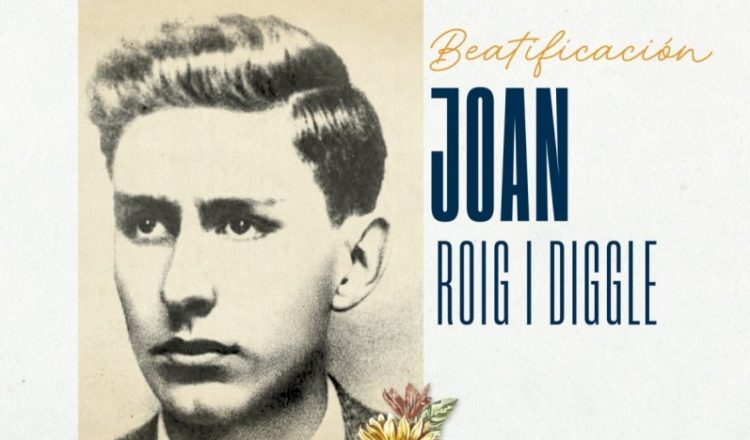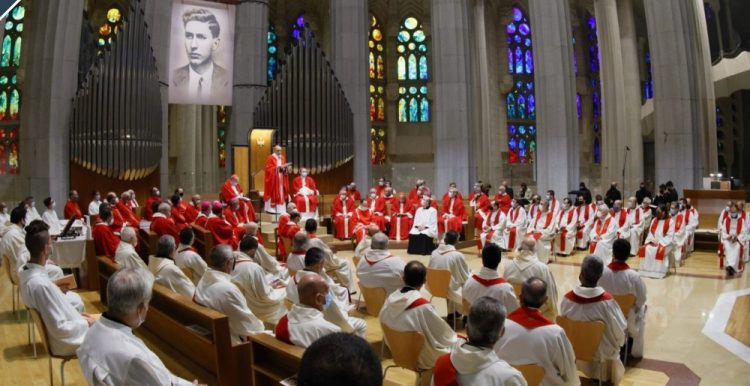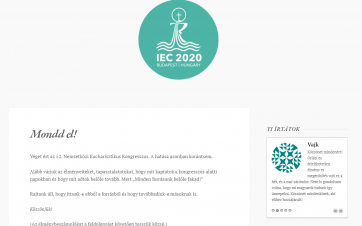
Joan Roig i Diggle died forgiving to his murderers

“God is with me” – were the Catalonian Piarist alumni, Joan Roig i Diggle’s farewell words to his mother on the night of September 11, 1936. Shortly afterwards, the barely 19 years old Joan Roig was taken away from his home by armed militiamen and shot dead with five bullets to the heart and one to the head in the cemetery of Santa Coloma, Barcelona. “May God forgive you as I forgive you!” – were his last words to his murderers.
Dreams, reality, devastation
The Catalan boy was a student of the Piarist fathers, Ignacio Casanovas and Francesco Carceller, both also suffered martyrdom during the Spanish Civil War. Joan was studied with the dream of becoming a missionary.
The Spanish Civil War broke out a few years prior to World War II, as a prologue by many. A rough estimation figures its death toll around 800 thousand on account of the slaughter. In the spring of 1931 at the municipal elections the liberal republicans won, King Alfonso XIII. fled the country and the Spanish Republic was proclaimed. Thereafter, though the Spanish Church requested to have the peoples’ will seriously respected, very soon it became targeted by the new power elite instead.
The other side of the coin
Apart from some conflicts with the power regime, the Catholic Church was loyal to the monarchy for quite a long time. With the King’s fall the process of separating the Church and the State began. In the constitutional debate Manuel Azañabe, Minister of War announced that Spain “had ceased to be Catholic.” Though the new constitution proclaimed the freedom of conscience, the religious denominations were declared organizations. Moreover, each of the public religious processions were subject to government approval. Any support granted by the state, provincial or municipal authorities was strictly forbidden, regardless of the religious denomination itself. Congregations were put under ministerial supervision, education and economic activities were prohibited and the ones labelled as dangerous by the authorities were disbanded, and their properties were nationalized. Catechism classes came under state control.
The churches on fire
In spring 1931, the anti-religious and anticlerical temper reached a point, when monasteries, churches were set on fire and ruined in Madrid and in other cities, villages. The economic crisis that hit the world in 1933 further deteriorated the already serious political crisis in Spain, with the right-wing getting the power that afterwards bloodily beat down the mass demonstrations. In the wake of the incredible violence, the period of 1934- 35 was recalled as “the two dark years.” The 1936 elections were won by the Popular Front, but the right wing could not accept his fall, so the situation resulted in a civil war outbreak in Spain.
In God’s service
Priests and churches became the targets of the bloody violence. These were the circumstances in which Joan Roig i Diggle was entrusted by a priest to take care of the ciborium that contained the Blessed Sacrament, to preserve it in his home and to distribute it to those who were unable to attend the Holy Mass due to the current situation. Joan was perfectly aware that he was going to risk his life, since the militia of the Marxist movement was hunting for the Christians playing an active role in the public- and faith life. Joan Roig was born in Barcelona (Spain) on May 12, 1917. He studied at the school run by De La Salle Brothers and the Piarist Fathers. Since his family experienced financial difficulties, he started to work, while was pursuing his studies.
20 th century martyrs
Joan and his family moved to Masnou, where he joined the Federation of Young Christians of Catalonia (FJCC), founded by Albert Bonet in 1932, and which numbered some 8,000 members prior to the Spanish Civil War. The young Joan wrote articles on social issues in the FJCC newsletter, and was requested to lead catechesis hours for children between 10 and 14 years old. In July 1936 Joan called the attention of some of the FJCC members that they all should be prepared to receive martyrdom with grace and courage, as did the first Christians. In the intense persecution that was followed, an estimated 300 young people from this organisation were killed in Catalonia, 40 priests amongst. The FJCC headquarters was burned down. In those hard days Joan “was relieving sorrows, encouraging the timid, paying visits to the wounded and was daily going to hospitals, so as to find out among the dead which of his fellows had been killed.” – recalled Joan’s mother.
Execution in the cemetery
On the night of September 11, 1936 the militia knocked on the door of his home. Joan Roig i Diggle, realizing that the consecrated Hosts were in danger, quickly ate them so as to avoid their desecration. That night he was arrested and taken to the Santa Coloma cemetery, where he was shot dead with five bullets to the heart and one to the head.
The then president of the FJCC wrote at the time of the young martyr’s death:
“When he arrived at Masnou, no one knew him, yet his piety and passionate love for the Eucharist soon became evident. He spent hours before the Holy Sacrament without realizing the passing time. His example converted far more than his words.”

Faith lived in a community
His beatification took place a couple of weeks ago, on November 7, 2020 in Barcelona. At the Holy Mass, Cardinal Juan José Omella, Archbishop of Barcelona said in his homily that Joan Roig was an “ardent defender of the Catholic Church’s Social Doctrine” and he can be a model for the young people of our time with his testimony of love for Christ and for his fellows. “Joan teaches us that all Christians are called to live their faith in community. No one builds his own faith alone, the Christian faith and religion is communal essentially.” – added Cardinal Omella. Blessed Joan Roig i Diggle is buried in the chapel at the parish church of St. Peter in El Masnou, Barcelona.
Source: catholicnewsagency, catholicherald, vaticannews, piaristak.hu
Photo: piaristak.hu










